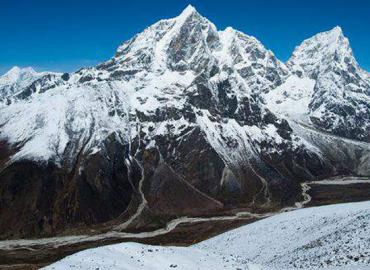Dr. Ramji Timalsina
On Jan. 7, 2021, I got two pleasant shocks at the same time. One: our daughter’s letter to me. Two: stories on the daughters of Nepal.
Our first daughter has finally announced that she has dropped her plan of being a medical professional (doctor). After her hard labour in both grade eleven and twelve plus nearly one year stay and study at Kathmandu for coaching classes and the last nine months at Itahari, today she came to this conclusion. She further announced that she will go ahead for CA (Chartered Accountancy) course.
She had been saying with her maternal grandparents for about a month. Thatday she called her mother for an emergency meet there and declared it. Then she sent a letter to me entitled “A Big Confession” that unfolded an unexpected message for me: “Baba, please do not get angry at me. I have lost all my interest for medical profession in last 20 months”. Thanks to the medical preparation classes and the Corona Lockdown! I never thought ofreceivingsuch a message from her.
But I felt proud of this eighteen year old lady who could take the decision for her life and just report it to us. We are the people to refer to, not to consult! In the letter she apologized for wasting thetwenty months of her precious life and a good amount of money in this period. I felt even prouder finding her realization, and happy to know our daughter is mature. Now, I can trust her more than before.
It reminded me her letter to the God when she was in her grade six. One day, after her grade six first term examination result, I found a small piece of paper under the pillow of my study room bed. She had written: “Dear god, please do not tell my father I failed computer. I will never fail again, dear god. Sorry, I lied my father.” That day, I dropped my tears with the realization that the non-existent God was closer to her than I was. She was so committed to these words that she never failed any subject ever after.
After seven years, there was the next letter. But it was directly addressed to me. A progress in her attitude to the God and parents! Thanks to the science course she did in her eleven and twelve grades. She confessed: “I cannot face you with this news”. She found herself weak for this, but I found it was her bold decision and even bolder announcement. It was a shock to me, but a pleasant one.
These days, unusual things are unfolding for me!
When my wife handed the letter to me, I had just started the last story “Meree Bhyaalentaain” [“My Valentine”] in Sanu Sharma’s book Ekaadeshamaa [In an Unknown Country] (2018/2075BS). The way I never thought our daughter would come to this decision, I never thought Sanu Sharma was such a wonderful story writer. Both of these daughters of Nepal pleasantly shocked me.
This collection of stories by Sanu Sharma was listed for the Madan Puraskar (the most coveted literary prize in Nepal) for the year 2075BS. I did not read it before the prize was announced. When the next book in the list was awarded with the Madan Puraskar and my reader friends reported that the winner was not very good book, I did not think of buying the rest ones in the list.
But when I was reported(later I found it was wrong) that Sharma’s book was in the theme of transnationalism and Nepali migration, I ordered it. It was delivered to my home on January 6. Reading the blurb at the back cover, I simply thought the blurb writer was promoting it for business. Then I took a look at the list of the stories in the table of contents. No title could attract my attention. They were as general as the titles of common traditional Nepali stories. Then, with a very little enthusiasm, I started to read the first story entitled “Bhaauju” [“Senior Sister-in-law”].
The first line itself raised my curiosity. When I read the other three lines (2-4), I got a drama in them. Then I was in the incidents. Slowly and gradually it made me involve into it. I was pleasantly shocked to find the story amazing in its theme, story line, juxtaposition and above all the quality of literary language. It shook me to the spine.
Generally, I do not read anything for quite some time, sometimes for some hours or for some days if a creation touches me to the ultimate depth. It was such a feeling this time, too. But after a few minutes, I was lured to read the second story. Such a desire itself was amazing for me. I read the second story “Chot” [“Hurt”] that gave me an equal effect to that of the first one. Then, before going to the rest of the stories, I wrote up to this point of this write-up.
When I finished writing this part, I felt very hot within. I could not read the other stories. I went out to the veranda in the cold evening. Then I went up to the top of the house. I walked around there. It was already half an hour before I realized that I was growing chill. Everything was normal. Then I came down to the study and began to read the third story “Chhoree” [“Daughter”]. Though it is not so well made like the first two, it is thematically powerful. It made me feel a proud father of our two girls. The fourth story “Baako Chasmaa” [“Father’s Specs”] gives a true picture of poverty and its consequences with a special focus on gender and class differences in the Nepali society.
But the fifth story “Maryaadaako Saathee” [Friend with Dignity”] is found to be very shallow though the issue it has raised is serious. This gradual fall on the literary quality made me serious about the fact why the writers cannot show equal creative capacity in all of their writings. Reading this story was a kind of relief for me as I could keep the book away for some time and go for my supper.
After an hour I returned to the book with a few questions: Can the remaining stories heat me or do I need a thick quilt in this cold evening? Was the fifth story just a comic relief or a general Sanu Sharma standard?
When I moved ahead in reading, I found most of the stories thematically sound and stylistically artistic. Every story skillfully deals with suspense and revelation. Though the intense mix of thought, emotion and imagination that the first two stories are made up of cannot be found in most of the other stories, almost all stories turn out to be pleasantly readable. Even when I took up reading the least artistic story of this collection, I never felt bored to move ahead till the end. It is a rare quality of contemporary Nepali story writing. The texture, art, characterization and indirectness are the major strengths of these stories. The choice of the name and narrative technique in many stories are appreciable. The use of language and setting to really fit the characters is praiseworthy.
Thematically, almost all stories are about Nepali women and their multi-sided empowerment. Education and the consequent courage the women get are the key to their success. The way Radhika and her friends who are neglected and suppressed by their money minded children in the USA prove themselves bold in the story “Santaan” [“Children”] inspires the women to believe on their own capacity and possibility.
Up to the half of the book, the readers may feel monotonous when only the women are shown good; whereas, men are treated as villains causing women’s problems. But when a few males are also shown to have good human qualities, the readers find the writer unbiased. “SaaleekoJhumkaa” [“Junior Sister-in-law’s Ear Ring”] is one of such stories. The stories such as “EkaRaat” [“One Night”] and “Sambandha” [“Relation”] are very creative in terms of their themes. The stories “Jawaaph” [“Retort”], “Ma” [“I”] and “Inaam” [“Prize”] have powerful end. Though some stories are not very good in theme and style, the way characters are presented in them makes them readable.
The focus of most of the stories is on the suffering of the people with good qualities. It reveals some kind of pessimistic attitude of the writer to life and society in general. This finding gets intense when most of the main characters in almost all the stories are good, but the rest of the characters are full of bad qualities, sometimes beyond the limit. Though this technique is useful to show the level of pain the good people, especially women in Nepali society,have to undergo, the excess is always bad. Some incidents are too filmy and highly unreliable. The major weakness of many stories is to make the main character (woman) leave home as protest. This used to be a revolutionary step decades back, but it is not so these days. The revolution now is to compel the oppressor realize their cruelty and punish and improve them; but not to leave them free to exploit other women and enjoy. This shows that the writer has traditional mind set and so wants to change the society that existed decades back, not now.
Though the transnational characters are used in some of the stories, still there are many facets of this life to be explored. And the women characters like our daughter who can decide everything about themselves are not found in any of the stories. Despite these shortcomings, every story is readable. There are very few books of Nepali short stories in which all writings are readable. Overall, this is a wonderful book. I hope to get more pleasant shocks from this storywriter and other Nepali daughters in the days ahead.
[Ramji Timlasina, PhD, is a lecturer of English at Tribhuvan University. A critic of high acclaim, he specializes in the study of Dispora. His seminal works include Nepalese Diaspora and Its Literature: Emotion and Expression, published by Lambert Academic Publishing, Germany. He has also written numerous critical reviews and research works and has represented Nepal at several academic events, both inside and outside Nepal.] The Gorkha Times






















